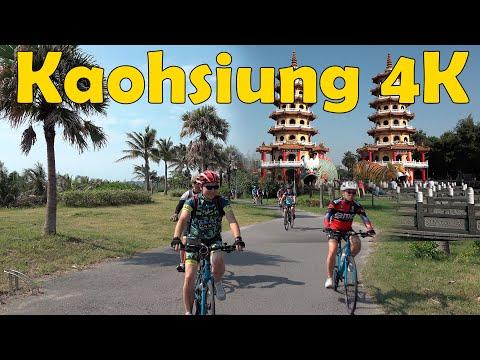I had always dreamed of exploring Taiwan, drawn by its vibrant culture, stunning landscapes, and rich history. Everyone I knew talked endlessly about Taipei, the bustling capital city that seemed to eclipse all other Taiwanese destinations. But my curiosity led me to a different part of the island: Kaohsiung. Known to some as an overlooked gem, it was here that I embarked on a journey that would challenge my perceptions and redefine my understanding of what makes a city truly remarkable.
Arriving in Kaohsiung, I was immediately struck by its relaxed atmosphere. The city, nestled in the southern part of Taiwan, felt different from the frenetic energy of Taipei. The streets were less crowded, and the pace of life seemed slower, almost leisurely. As I stepped out of the airport and onto the streets, the warm, humid air wrapped around me like a comforting blanket, setting the tone for my exploration.
My first destination was the Love River, a beautiful waterway that flows through the heart of the city. Known for its romantic ambiance, the Love River was adorned with charming cafes and lantern-lit pathways. I took a leisurely stroll along the riverbanks, soaking in the serene environment. The soft glow of the city lights reflecting off the water created a mesmerizing scene that made me understand why so many locals and visitors alike cherished this spot. It was here that I realized Kaohsiung’s beauty lay not in its grandiose landmarks but in the subtle, everyday moments that shaped its unique character.
One of the highlights of my trip was visiting the Liuhe Night Market. Unlike the bustling night markets of Taipei, Liuhe offered a more intimate experience. As I wandered through the maze of food stalls, I encountered an array of tantalizing smells and vibrant colors. I sampled everything from juicy grilled squid to savory beef wraps, each bite a testament to the rich culinary traditions of the region. The market was a feast for the senses, and the friendly interactions with the vendors made me feel like a part of the local community.
Kaohsiung’s art scene was another revelation. I spent an afternoon exploring the Pier-2 Art Center, a sprawling complex that housed an eclectic mix of galleries, studios, and installations. Originally an old warehouse district, Pier-2 had been transformed into a vibrant cultural hub. The juxtaposition of industrial architecture with contemporary art created a dynamic space where creativity thrived. I was particularly captivated by an interactive exhibit that allowed visitors to immerse themselves in the creative process. It was clear that Kaohsiung was a city that embraced innovation and artistic expression.
A visit to the Fo Guang Shan Buddha Museum was a humbling experience. Located just outside the city, the museum is home to one of the world’s largest bronze Buddha statues. The sheer scale and grandeur of the statue were awe-inspiring, but what struck me even more was the peaceful atmosphere that enveloped the entire complex. The museum, with its sprawling gardens and serene temples, provided a tranquil escape from the hustle and bustle of everyday life. It was a place where time seemed to stand still, allowing me to reflect on the deeper aspects of existence.
Kaohsiung’s commitment to green spaces was evident in its numerous parks and recreational areas. I spent a delightful afternoon at the Shoushan National Nature Park, where I hiked along trails that offered panoramic views of the city and the surrounding coastline. The park was a testament to Kaohsiung’s dedication to preserving its natural beauty and providing residents and visitors with opportunities to connect with nature. As I reached the summit and gazed out at the sprawling city below, I felt a profound sense of appreciation for the harmonious balance between urban development and environmental conservation.
One evening, I decided to take a ferry ride to Cijin Island, a small but vibrant island known for its fresh seafood and historical sites. The ferry ride itself was a pleasant experience, offering stunning views of the city skyline as we departed. On Cijin Island, I explored the historic lighthouse and wandered through bustling seafood markets. The island had a distinctive charm, with its narrow streets lined with colorful shops and eateries. It was a perfect example of how Kaohsiung’s lesser-known attractions could offer a rich and fulfilling experience.
Throughout my time in Kaohsiung, I couldn’t shake the feeling that this city was indeed one of Taiwan’s most underrated treasures. While Taipei might dominate the spotlight, Kaohsiung possessed a quiet allure that was equally deserving of recognition. Its blend of natural beauty, artistic vibrancy, and cultural richness created a tapestry of experiences that were both diverse and deeply meaningful.
As I prepared to leave Kaohsiung, I reflected on the journey I had undertaken. The city had surpassed my expectations and offered me a new perspective on what it means to truly explore a place. It was not the grandiose landmarks or the bustling crowds that made Kaohsiung special; rather, it was the subtle, authentic moments that wove together to create a memorable and enriching experience. In a world where popular destinations often overshadow hidden gems, Kaohsiung stood out as a reminder of the beauty that can be found in the most unexpected places.
